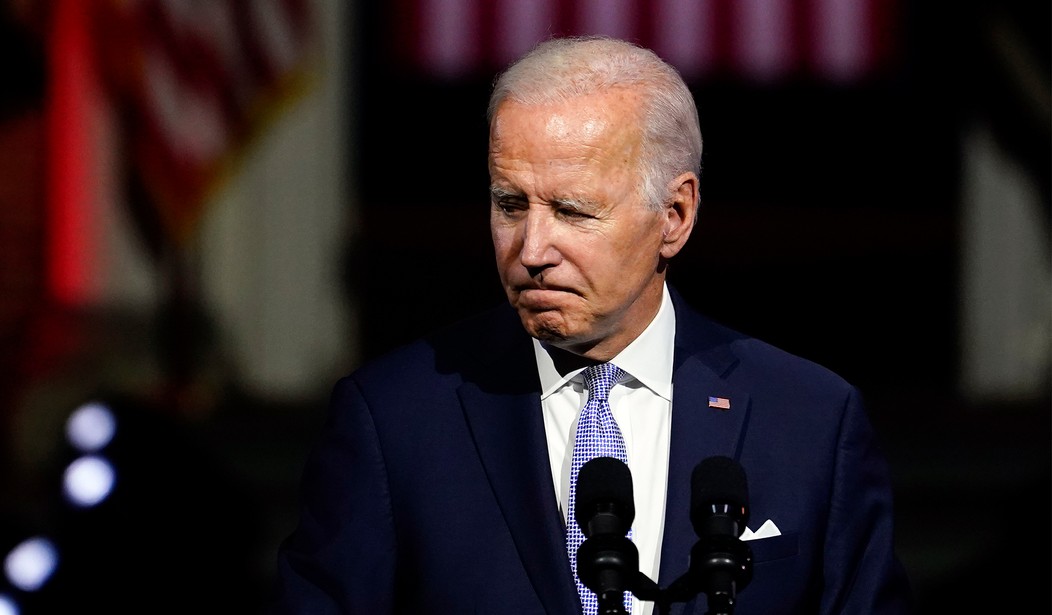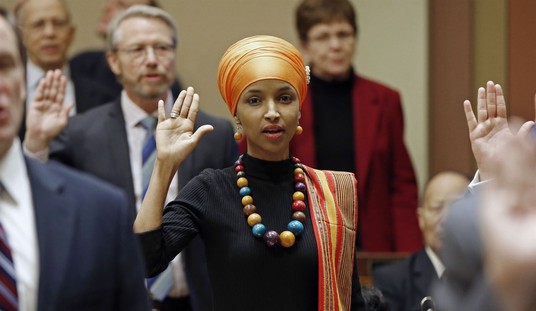Has the cancellation of the red wave been … canceled? The Washington Post/ABC Poll series has hardly been friendly to the GOP — and in fact, its previous iteration had Democrats up a point. That survey sample in April was of registered voters, however, and even then was an outlier in a sea of Republican leads.
So it seems rather interesting that just as other pollsters have begun showing Democratic rebounds, the new WaPo/ABC poll shows Republicans with a one-point edge on the generic RV ballot now that they’re applying a likely-voter model:

Statistically, this isn’t much of a change, of course. And it may not even signal that much of an added Republican advantage even if it were. Generally speaking, Democrats need something around a D+5 in this measure to break even in congressional elections due to the structural nature of such polls and the House itself. A D+1 is not a good result for Democrats, so the current D+0.8 in the RCP aggregate isn’t much of a comfort for them — at least not as a signal for the outcome of control of the House.
Update: I missed that this was their registered-voter result. Their pollster Langer Research notes up front that it goes to +5 on the LV model:
His party struggling in the midterms, his economic stewardship under fire and his overall job approval under 40 percent, a clear majority of Democrats in the latest ABC News/Washington Post poll say the party should replace Joe Biden as its nominee for president in 2024.
In the midterm election ahead, registered voters divide 47-46 percent between the Republican and the Democratic candidate in their House district, historically not enough to prevent typical first-midterm losses. And one likely voter model has a 51-46 percent Republican-Democratic split.
A big hat-tip to Liam Donovan for that catch.
However, it’s yet another piece of evidence that likely-voter models are about to shift the reporting on prospects for this midterm election. Rather than look at the chart from RCP, let’s look at the list of results on which it’s based:

All of the polls for the current RCP aggregate average are from this month. Notice anything else? Every single poll showing a Democratic lead uses samples of registered voters. Not one likely-voter survey has Democrats in the lead. Republicans lead in two of the three likely-voter surveys, and tie in the third, but they don’t trail in any of them.
And why might that matter? Let’s turn back to the Post’s analysis:
At this point, both sides are highly motivated to turn out in November. Among registered Democratic voters, 3 in 4 say they are almost certain to vote compared with about 8 in 10 Republicans. Independents are less motivated. Four years ago, Democrats were about as mobilized as Republicans and had a clear lead in overall support. Eight years ago, when Democrats suffered losses, Republicans were more motivated.
Recall anything else about eight years ago? The polls and the polling analysis missed the mark by a wide margin. Pollsters waited until late to apply likely voter models and then missed how the enthusiasm gap would play out — and that was with a relatively popular incumbent president and relative economic stability. Four years ago, Trump was deeply unpopular and coming off the Russia-collusion accusations, so that midterm was far more predictably favorable to Democrats — so the polling analysis largely held up.
The key is to focus on the fundamentals, such as enthusiasm, trust on the issues, and presidential favorability. On that latter score, Democrats are in serious trouble when polling likely voters:
President Biden continues to be a drag on Democratic candidates this fall. The Post-ABC survey pegs his approval rating at 39 percent, with 53 percent disapproving, including 41 percent strongly disapproving. The share of Americans saying Biden has accomplished “a great deal” or “a good amount” has grown from 35 percent last November to 40 percent today, although a 57 percent majority still says he has not accomplished much or anything.
Another key is independents, and again, likely-voter indies are breaking Republican in the WaPo/ABC poll:
Political independents narrowly favor Republicans, 47 percent to 42 percent, in the vote for Congress. In 2018, the final Post-ABC poll found Democrats holding a seven-point advantage among independents. Democrats’ competitiveness with independents is perhaps notable, given that independent voters disapprove of Biden by 60 percent to 31 percent.
What about the issues?
Voters say inflation and the economy are two of the most important issues in their decision, along with abortion and education. Republicans hold a 17-point advantage among registered voters on trust to handle the economy and an 18-point advantage on trust to handle inflation. But Democrats answer with a 17-point advantage on trust to handle abortion.
On other issues, Republicans hold a 22-point advantage on handling crime while Democrats hold a 21-point advantage on climate change. Democrats and Republicans are about even on handling education and schools.
Voters prioritizing abortion and/or climate change were going to vote Democrat anyway. Voters prioritizing the economy, inflation, and crime are not going to vote for the current status quo even if they might at times have trusted Democrats on those issues in the past. And if you want a peek at the priorities in this cycle, this chart sums it up:

Note that these are not in descending order when you combine the top two importance responses. The ranking in that calculation becomes:
- Economy: 85%
- Inflation: 78%
- Education and schools: 77%
- Crime: 67%
- Immigration: 63%
- Abortion: 62%
- Climate change: 50%
Here’s the most fundamental fundamental to keep in mind when analyzing the midterms: voters decide based primarily on their daily lived experiences. When the economy is good, crime is low, and their kids get an education rather than an indoctrination, they stick with the status quo and/or focus on aspirational issues like climate change. In a stagflationary environment where crime is exploding around them and their children are getting indoctrinated rather than educated, voters will demand change and a focus on everything that’s going wrong in their lives and communities. The issue priorities in this poll form a gigantic flashing neon sign of discontent, especially the specific result on inflation.
With that in mind, even the R+1 on RVs looks a bit like wishful thinking for Democrats. And it might be, given the historic lean that the WaPo/ABC poll gives Democrats. One has to wonder how low Biden’s job approval will drop as pollsters shift to LV models over the next few weeks, too.








Join the conversation as a VIP Member